Niue is an isolated independent island nation located 600 nautical miles WNW from Rarotonga. Known as “The Rock”, the island is made up of coral limestone and is 12 miles long by 9 miles wide. There is no surrounding reef and the only mooring is on the west side near the village of Alofi.
Upon arrival, we tied to a mooring buoy, then took the dinghy to the wharf to meet customs & immigration, agriculture, and health officials for check in. Since there is no beach landing, dinghies are raised up 10 feet onto the concrete wharf by a self-operated electric crane. It’s a difficult and scary process when the surf is rough, which it seemed to be every time we hoisted our dinghy. After connecting the crane’s hook to the dinghy lifting bridle, you climb out of the dinghy via a set of stairs to reach the top of the wharf, where the crane controls are located. After raising the dinghy above the wharf, you swing the crane arm around and lower the dinghy onto a flat aluminum dolly, then park the dinghy in an area clear of the crane. Finally, you return the lifting hook back over the water and lower it for the next dinghy to use.
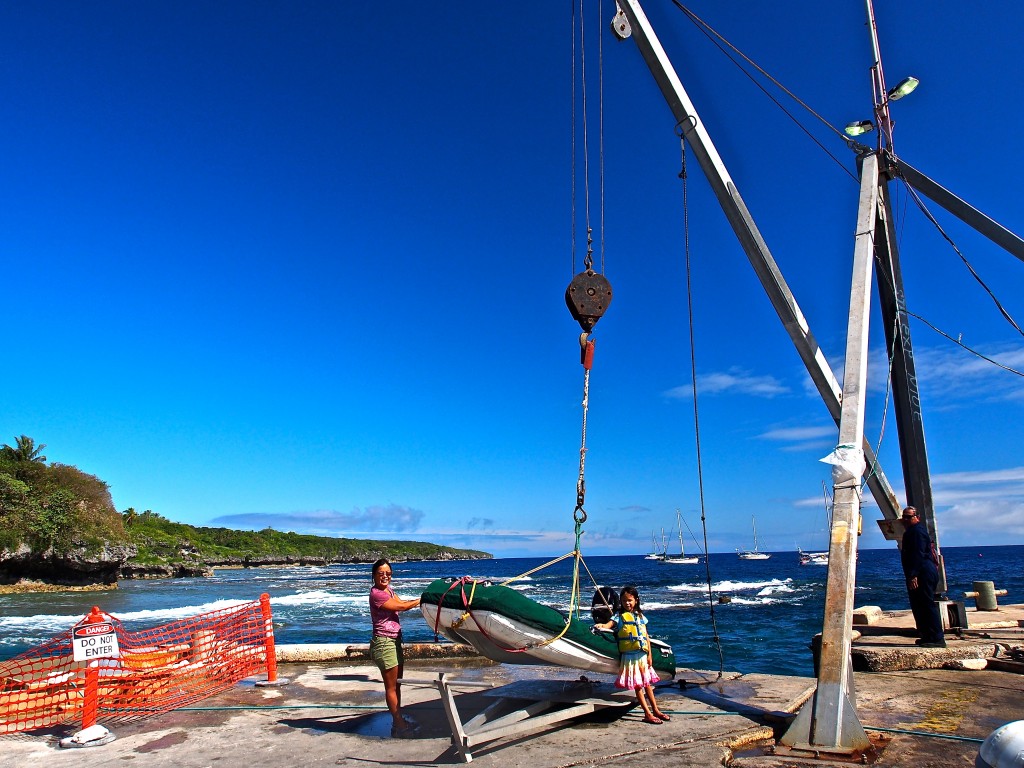
After all the formalities of checking in were complete, we walked around Alofi and found the Niue Yacht Club, who rents out the 20 mooring buoys. The yacht club is a very nice place to relax, use wifi, meet other cruisers, and get information. Ira, who volunteers her time at the yacht club, knows everything about the island. She called to make dinner and car reservations for us, and offered suggestions on what to during our short stay on Niue.
Some of the main attractions on Niue are the caves and chasms carved out of the limestone along the rugged coastline. We rented a car and drove around the island perimeter, stopping at 5 sights along the way. This was the first time I drove a car in 10 months, and after almost a year on a sailboat that moves at an average speed of 5 knots, driving at 45 mph seemed very fast (also scary since I was driving a car with the steering wheel on the right, and driving on the opposite side of the road!). We parked the car at the side of the road and hiked down to the coast on paths called sea tracks. At the end of the sea tracks was either a cave, swimming spot, or chasm.
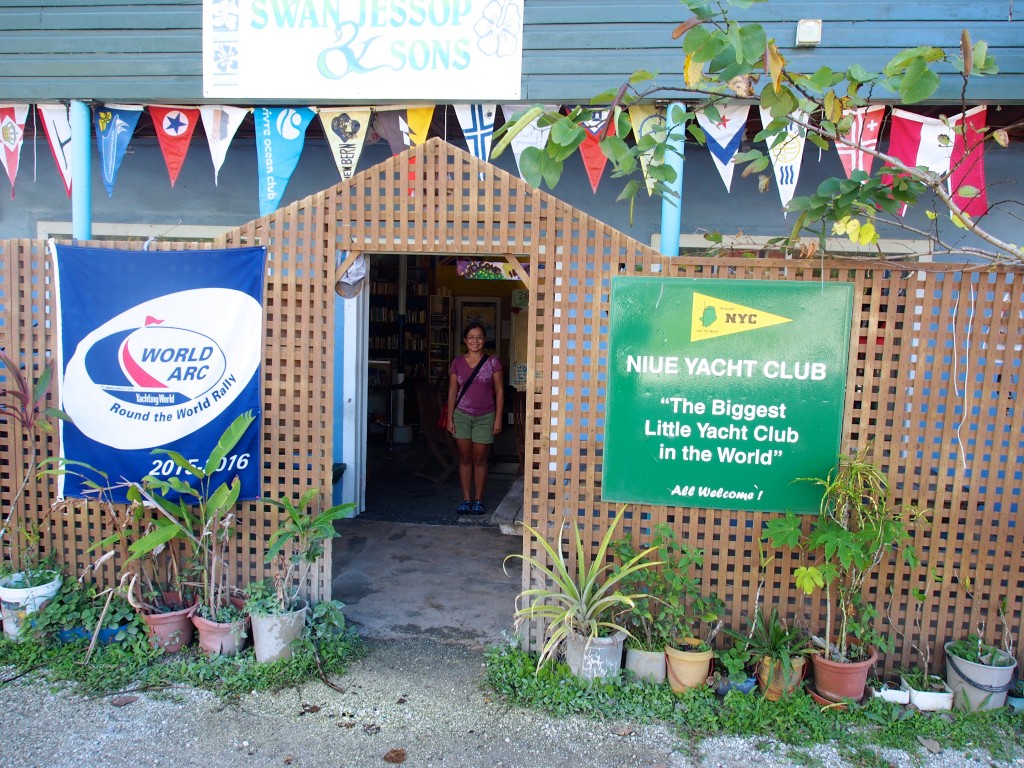
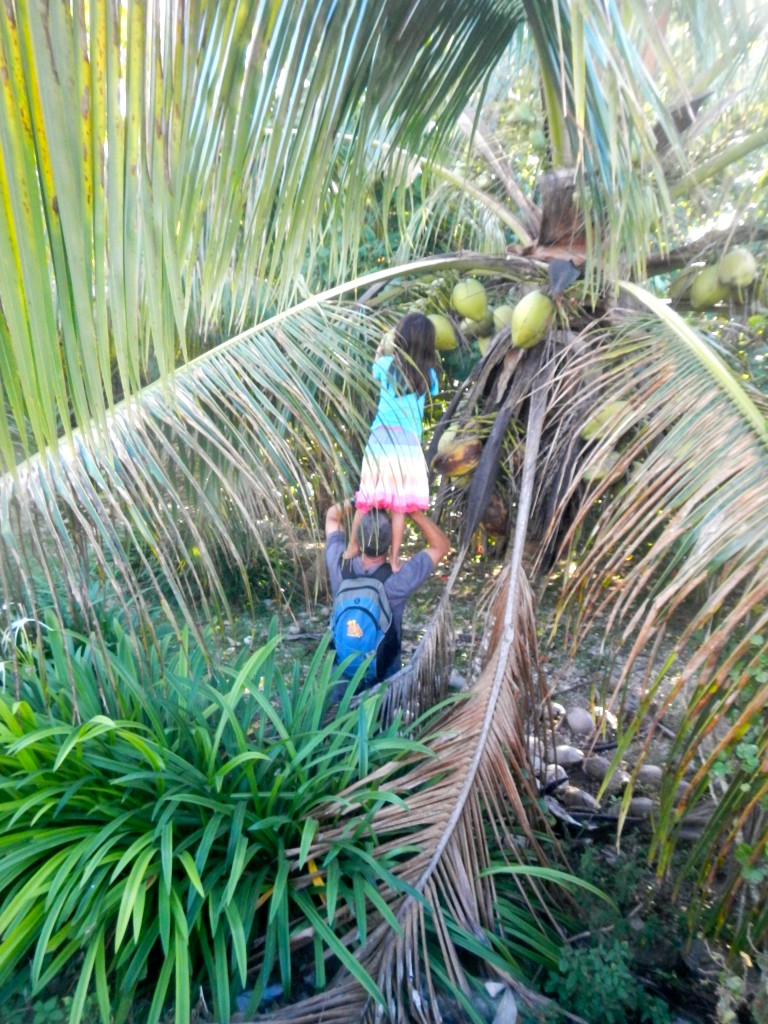
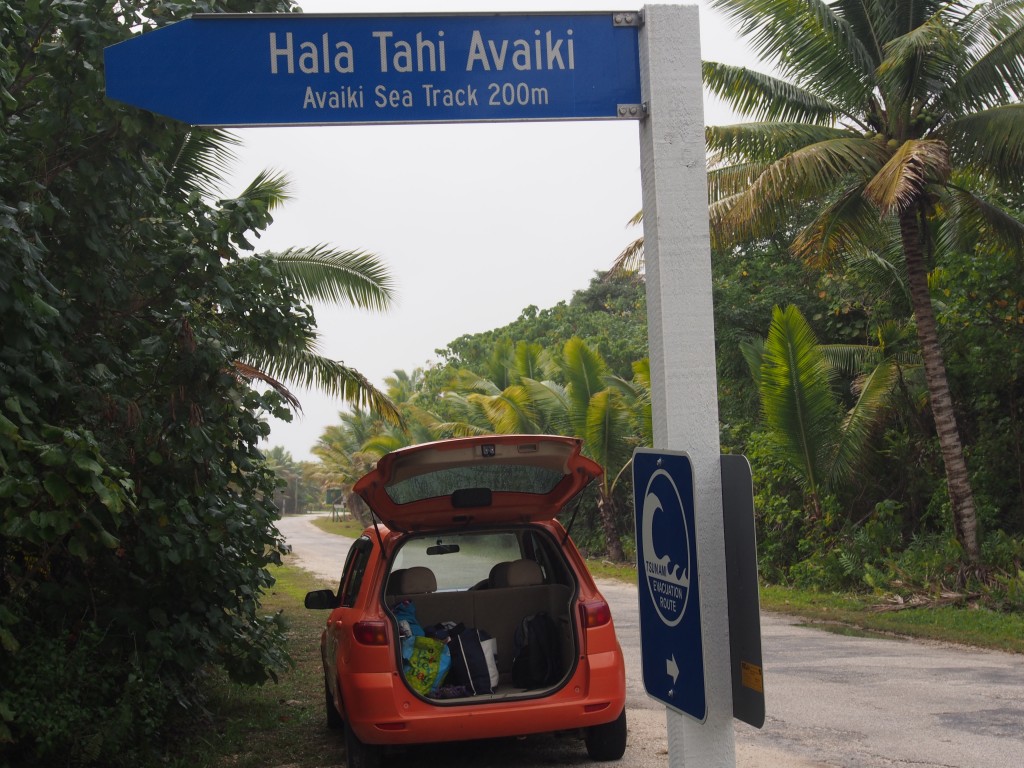
Here’s our 4 favorite stops driving around the island:
Avaiki
Named after a derivative of the word “Hawaike”, the ancestral home of the Polynesians who first came to Niue on canoes, this site was celebrated by those of high-ranking, in gratitude of their safe passage. A short walk down the sea track, we entered a spectacular dripstone cave. After exploring the cave, we exited along the coast to find small pools of clear water among the coral limestone. These pools can only be reached at low tide and were full of juvenile fish and fragile coral.
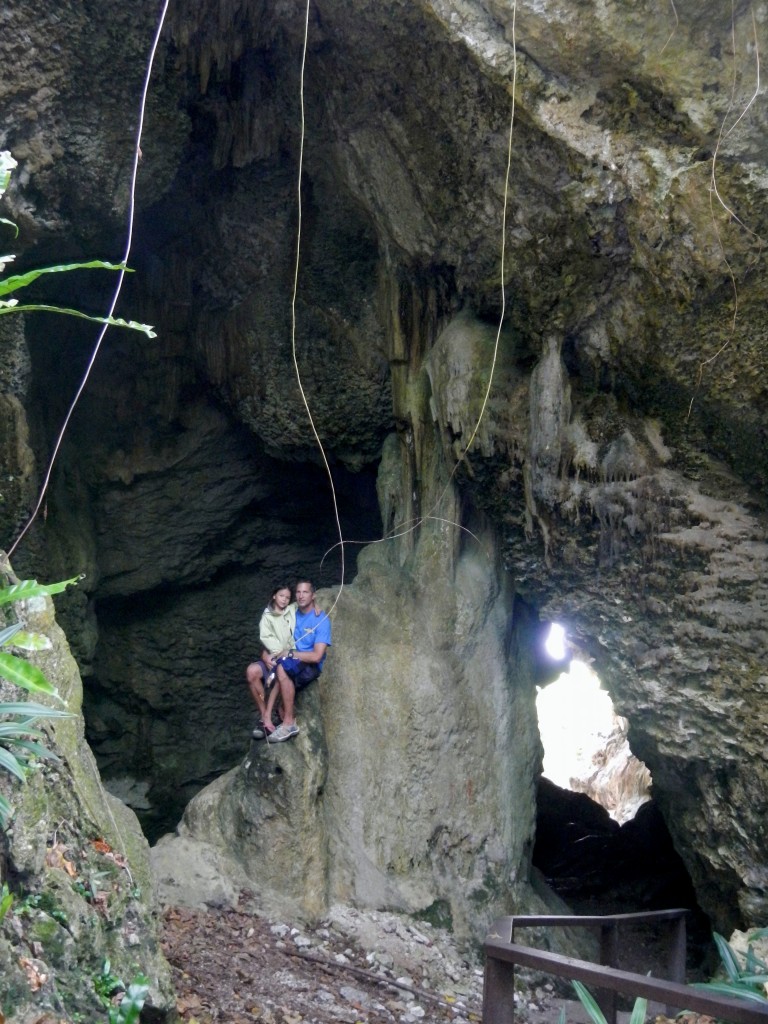
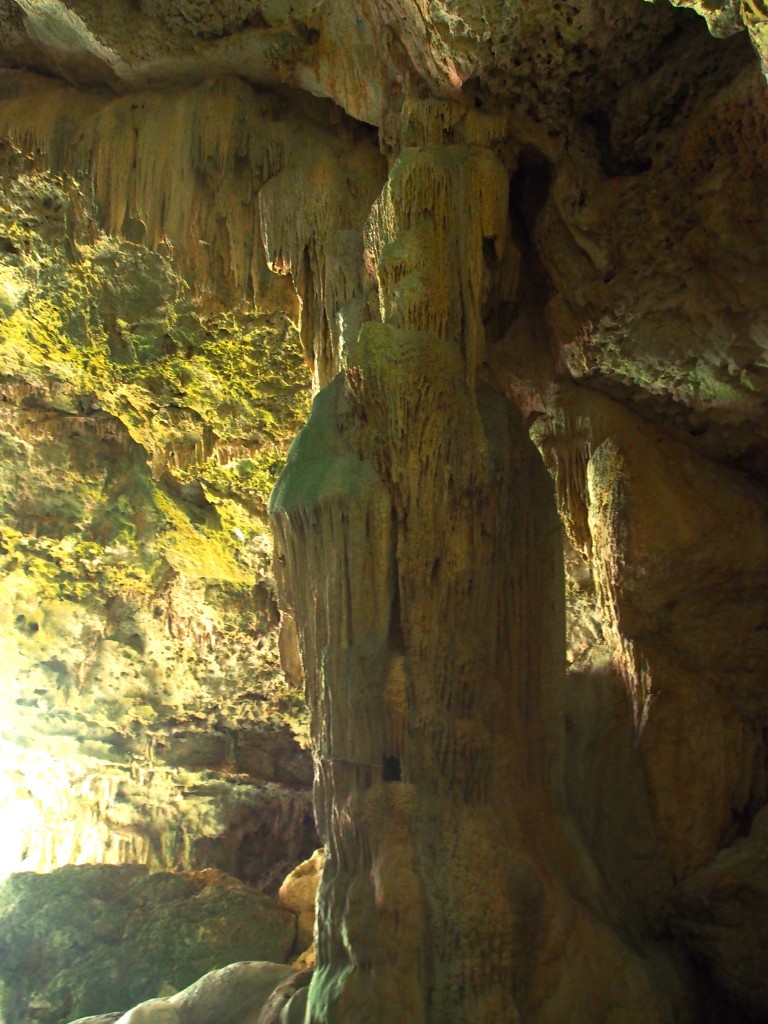
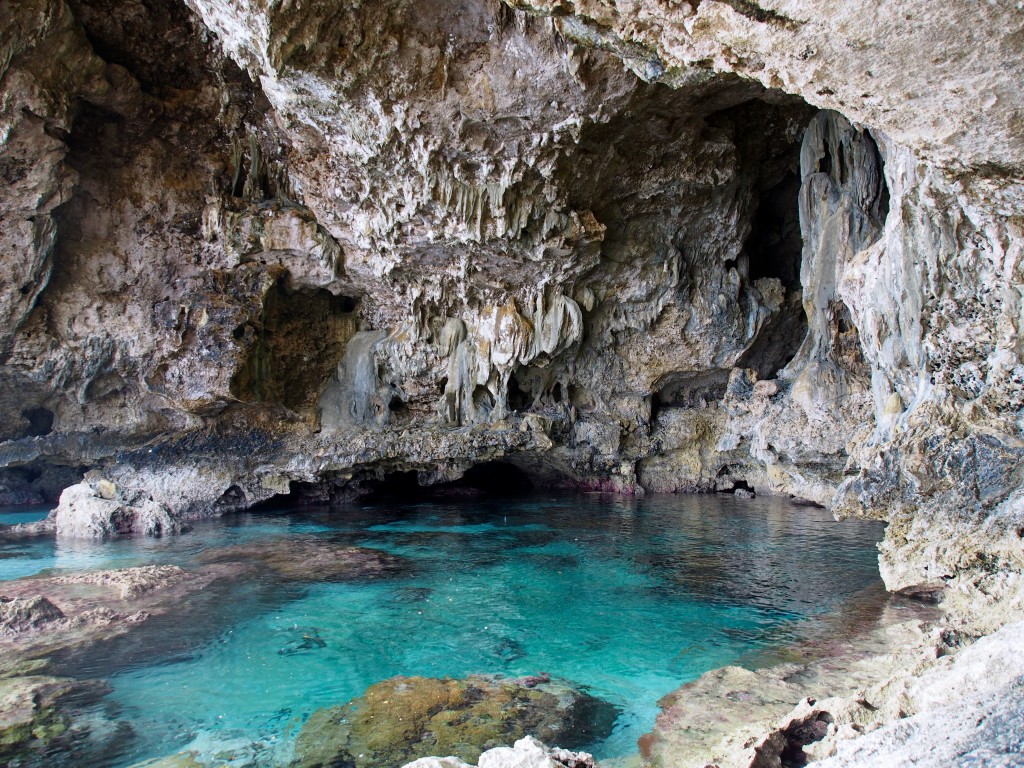
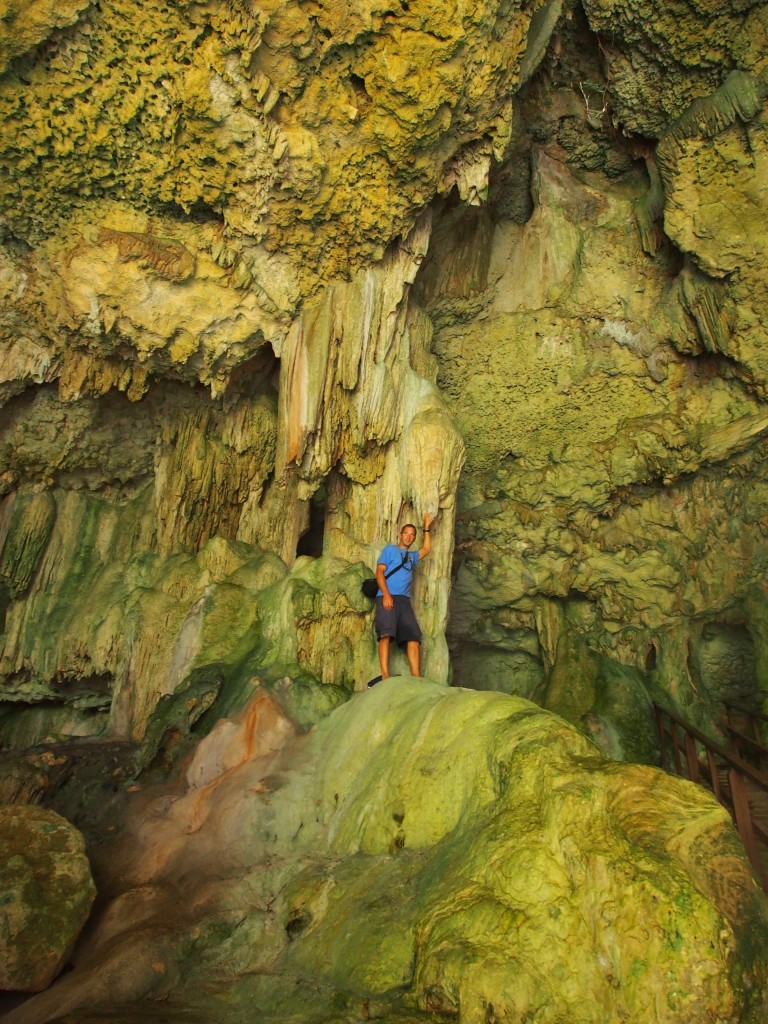
Palaha Cave
Palaha is one of the the biggest caves on Niue with rare limestone formations formed over hundreds of years. We hiked down the sea track and entered the cave to explore the amazing stalactites and stalagmites formed as water drips through the cave ceiling. We could see different colors in the formations from various minerals, as well as the glassy look of a new stalagmite forming.
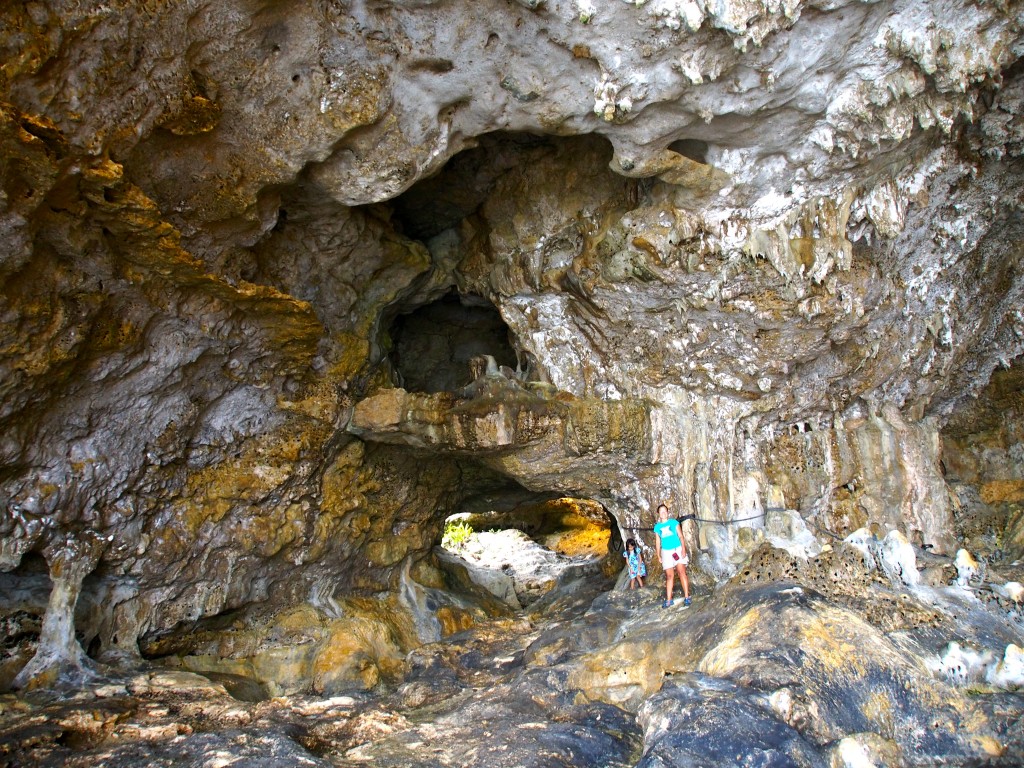
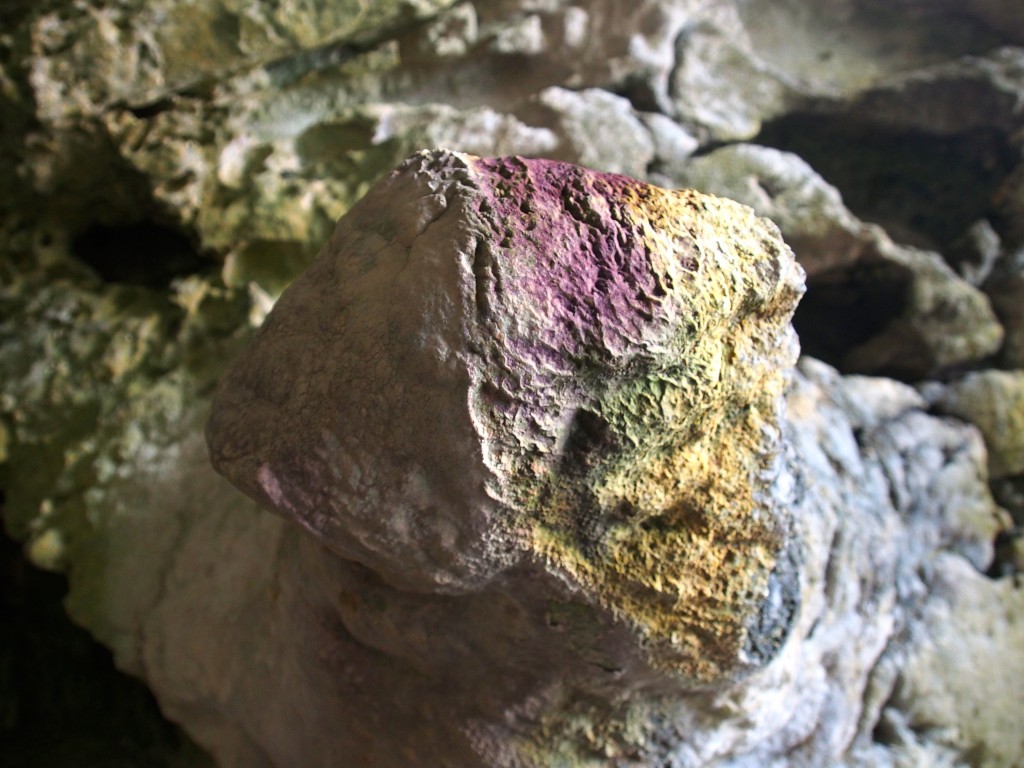
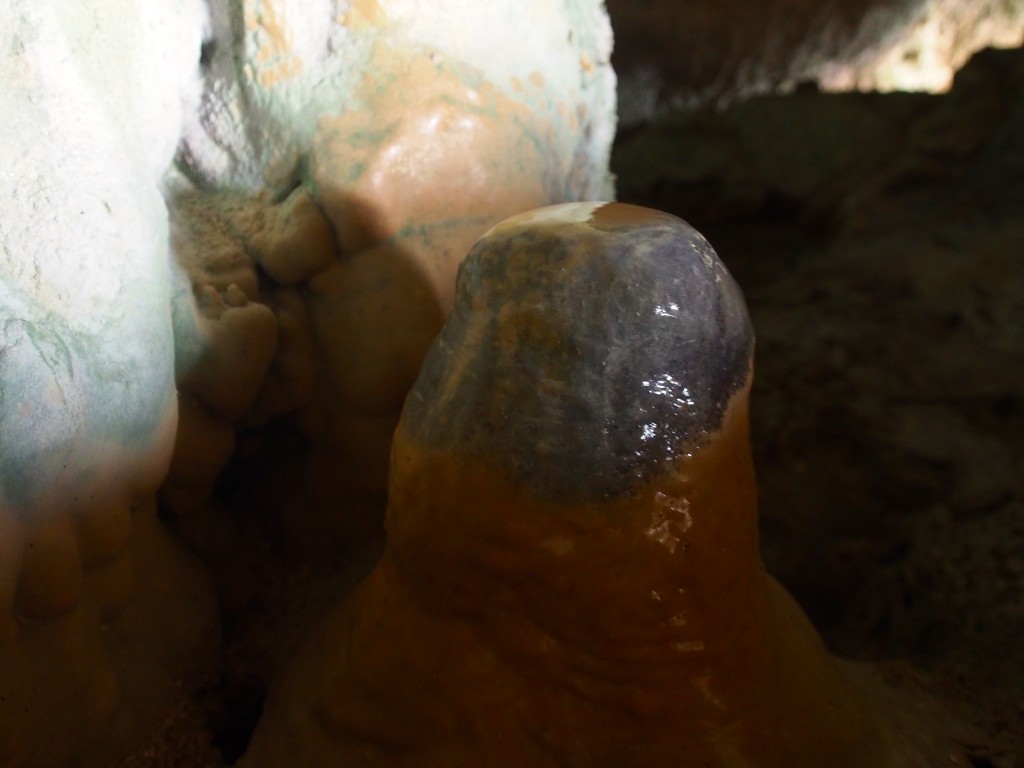
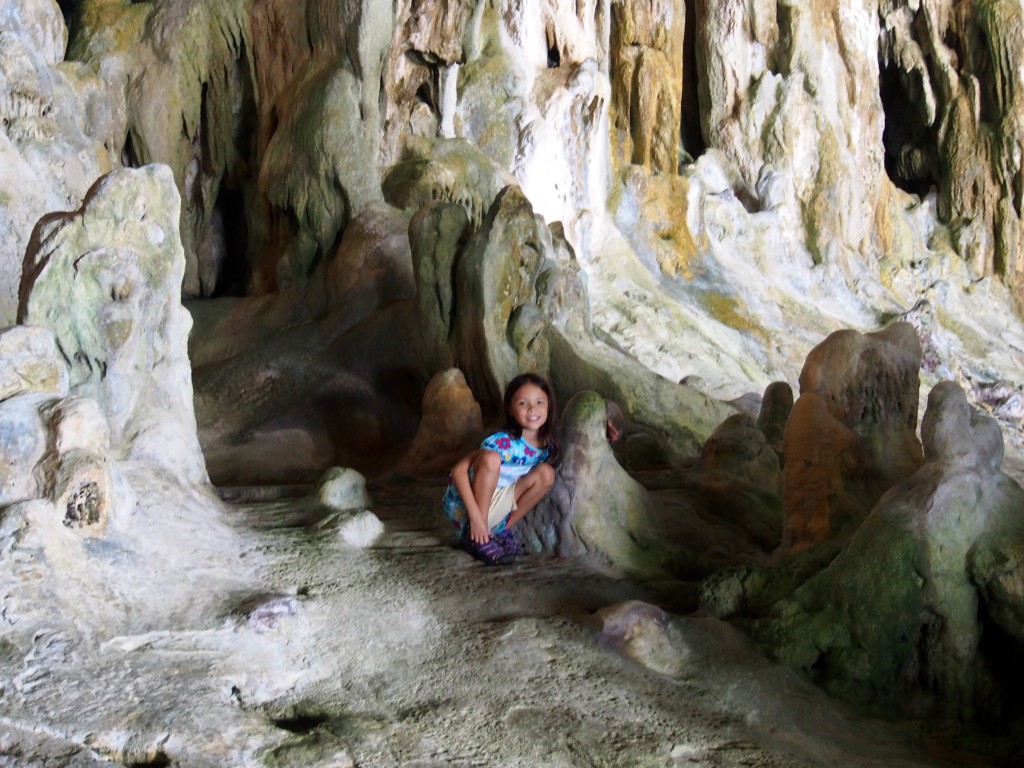
Limu Pools
Limu Pools are near the village of Namukulu. A hike down the sea track ended at the sea where a large sea-water pool is protected by huge rocks. The rock ledges and clear, deep water make this a great place for swimming. Since it was a cool, overcast day, we hadn’t planned on swimming so didn’t bring swim suites…but I couldn’t resist jumping off a cliff into the water wearing my red speedos!
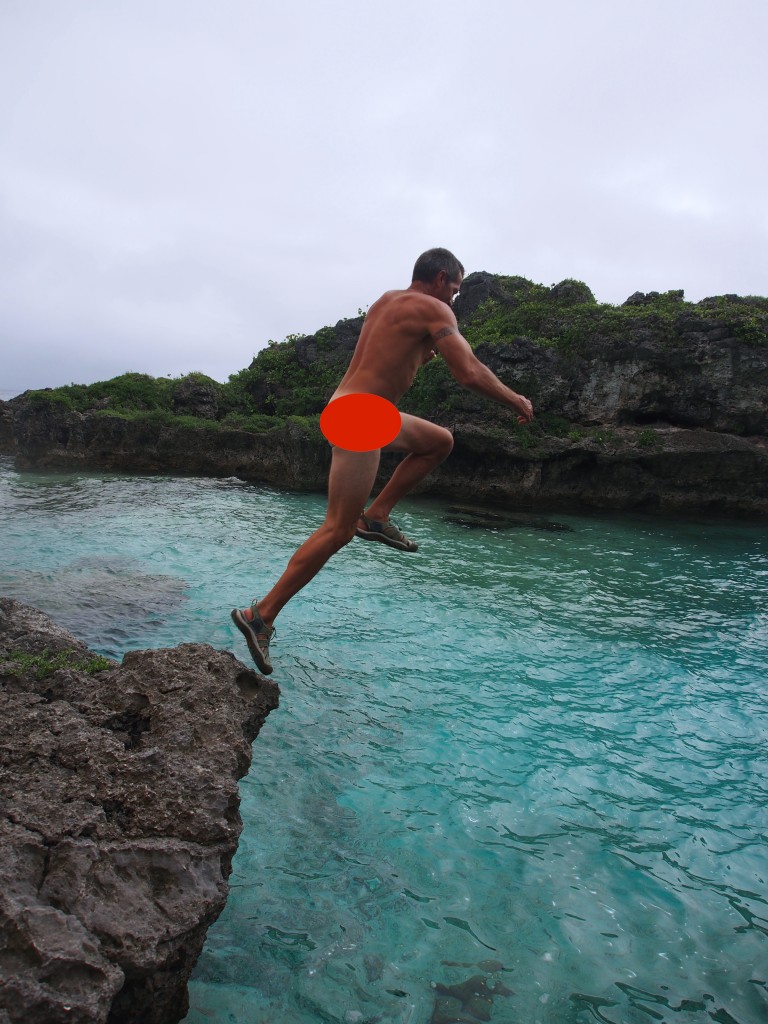
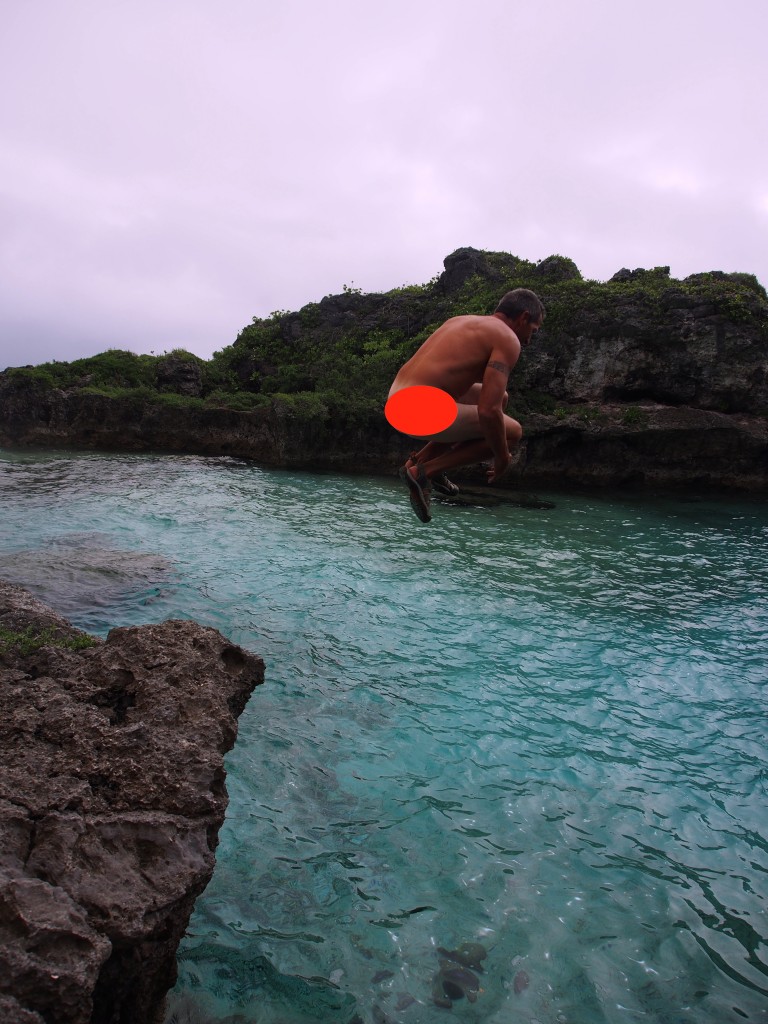
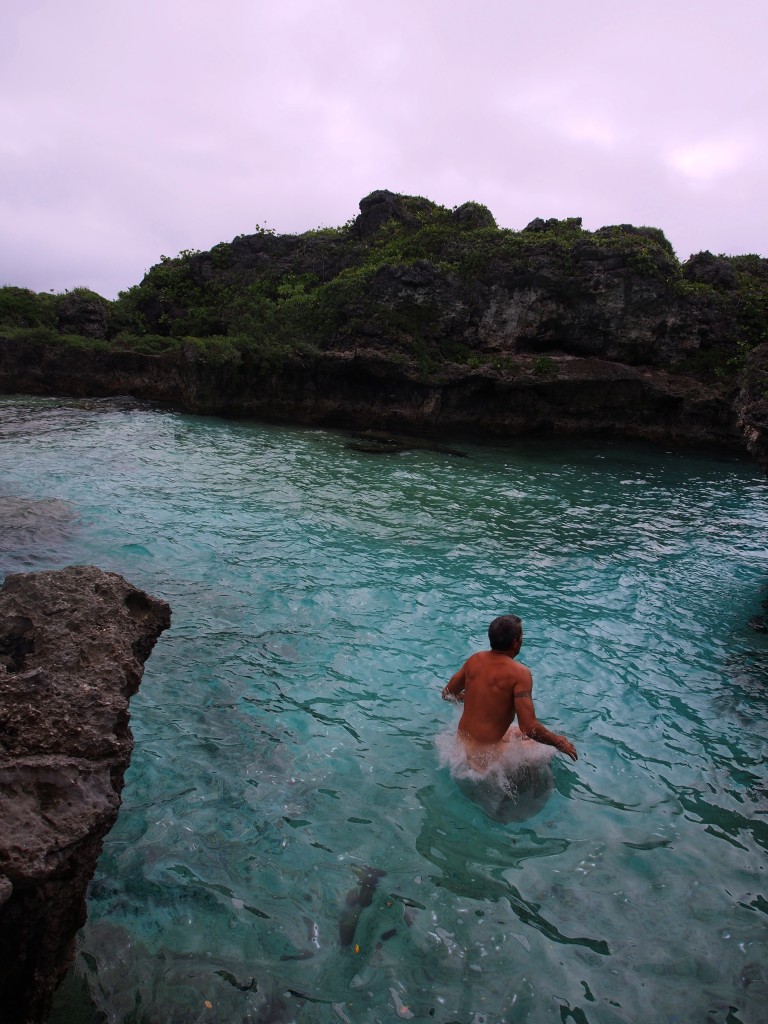
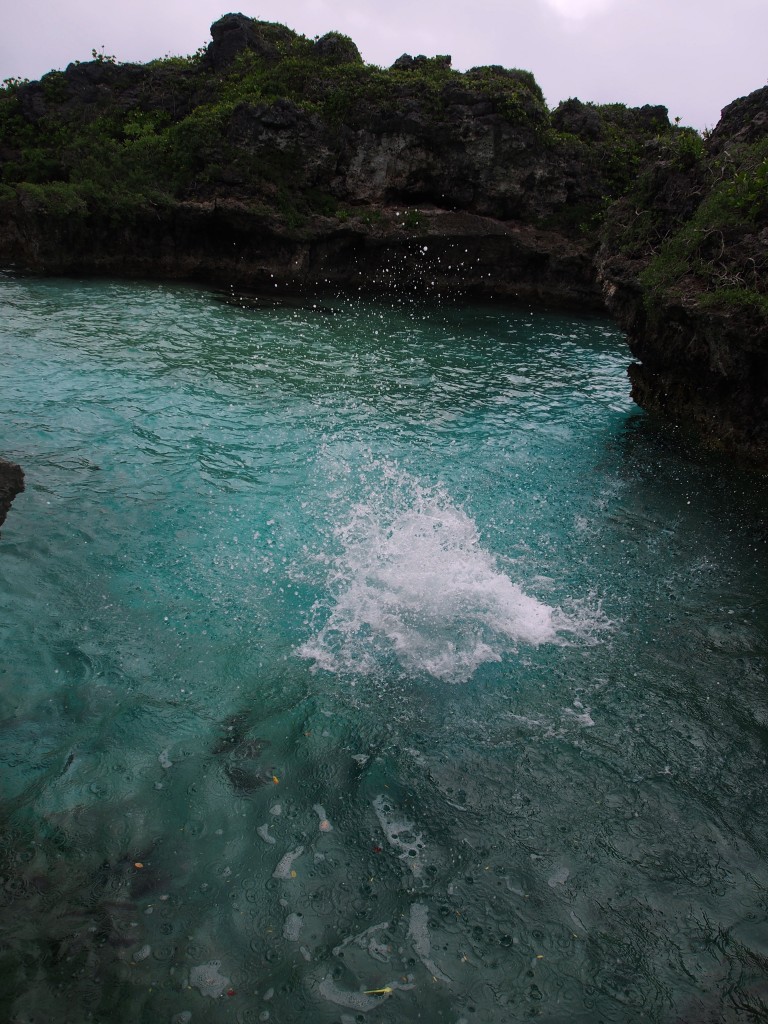
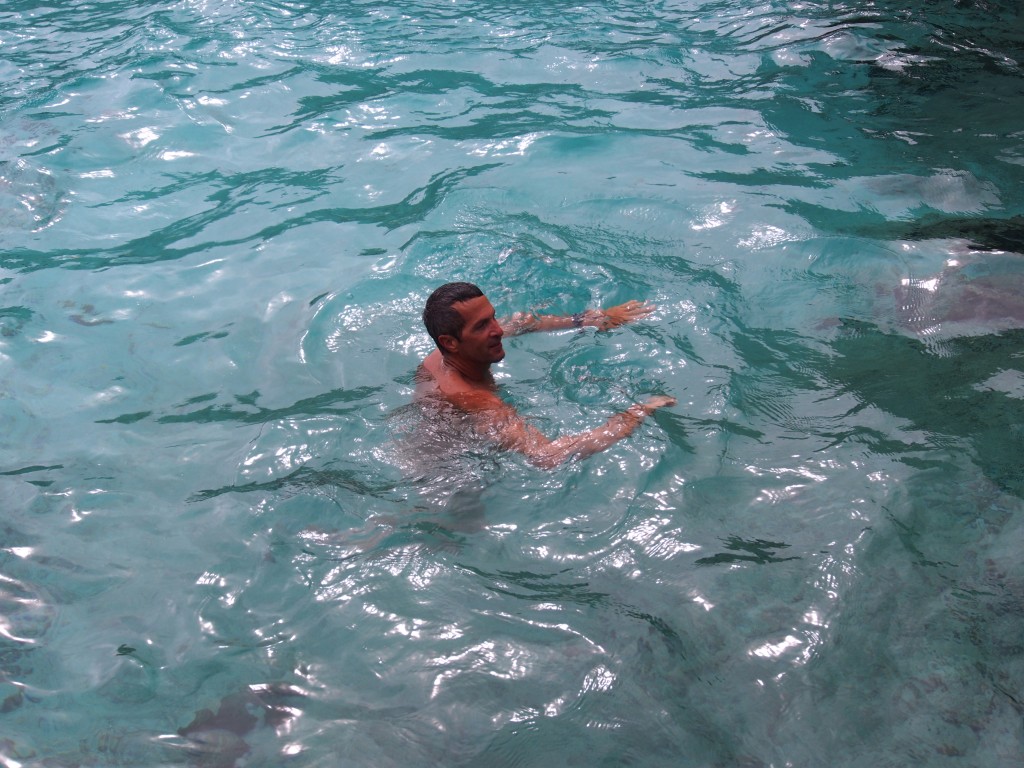
Togo Chasm
Located on the rugged windward west coast of Niue, Togo Chasm was the last stop on our island tour. Along the 30-minute drive there, we passed through several small villages with houses that were mostly abandoned from when a large typhoon passed through in 2008. Similar to a lot of other pacific islands, Niue suffers from a population decline as the natives seek opportunities elsewhere (like the Cook Islanders, Niueans enjoy dual citizenship with New Zealand). A half hour hike through a coastal forest opened up to the coastline with sharp pinnacles and sink holes. A crude cement path made it easier to walk though this area and at the end was an amazing chasm. To enter the chasm, we carefully climbed down a steep 40’ ladder, which was quite scary when looking down from the top. At the bottom was a long sandy strip of flat land surrounded on all sides by vertical rock walls. A few palm trees managed to grow inside the chasm. We climbed through a small opening in the rocks that led to the sea, where we sat and watched the waves force sea water into and out of the opening. Togo Chasm was an amazing place!
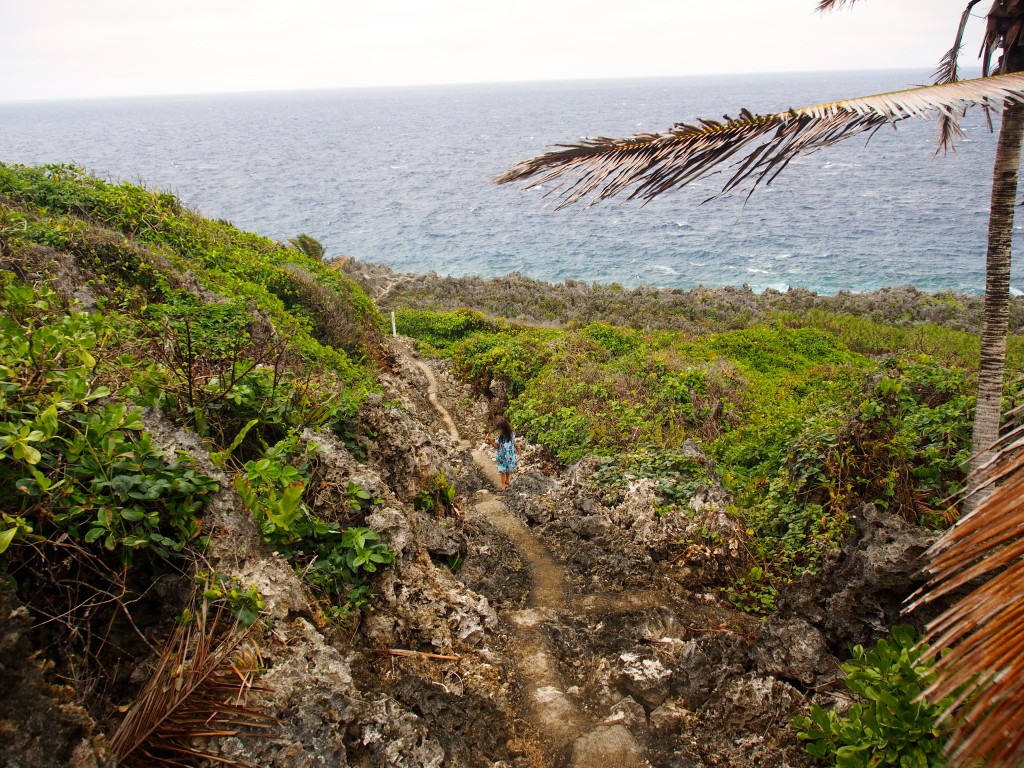
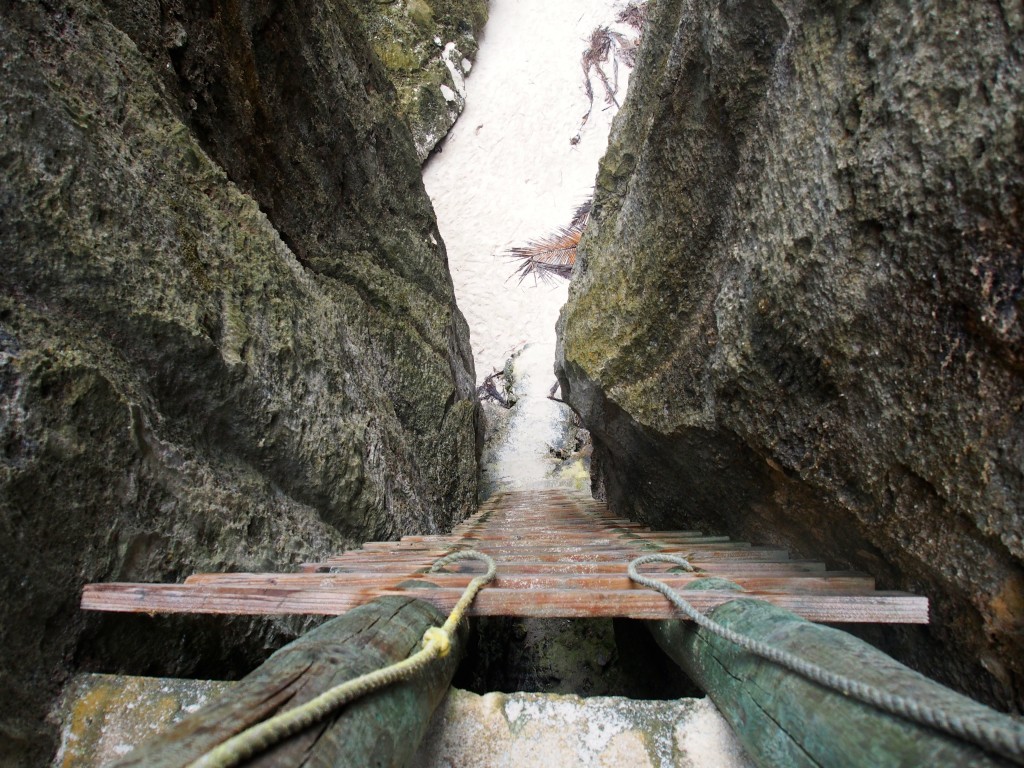
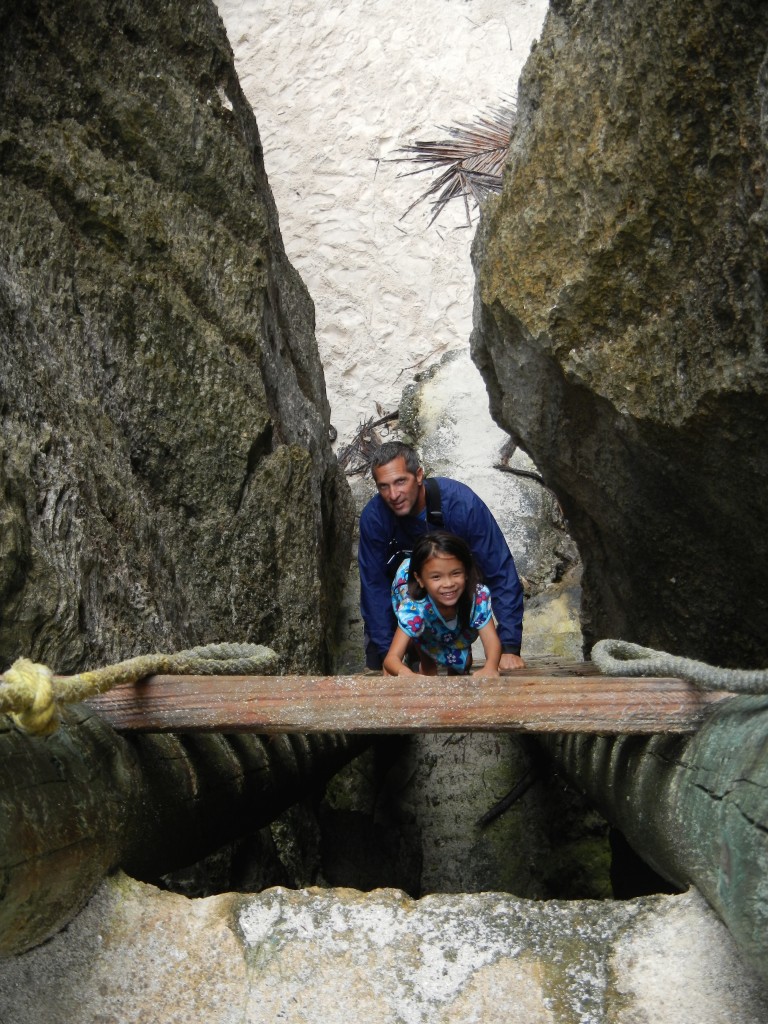
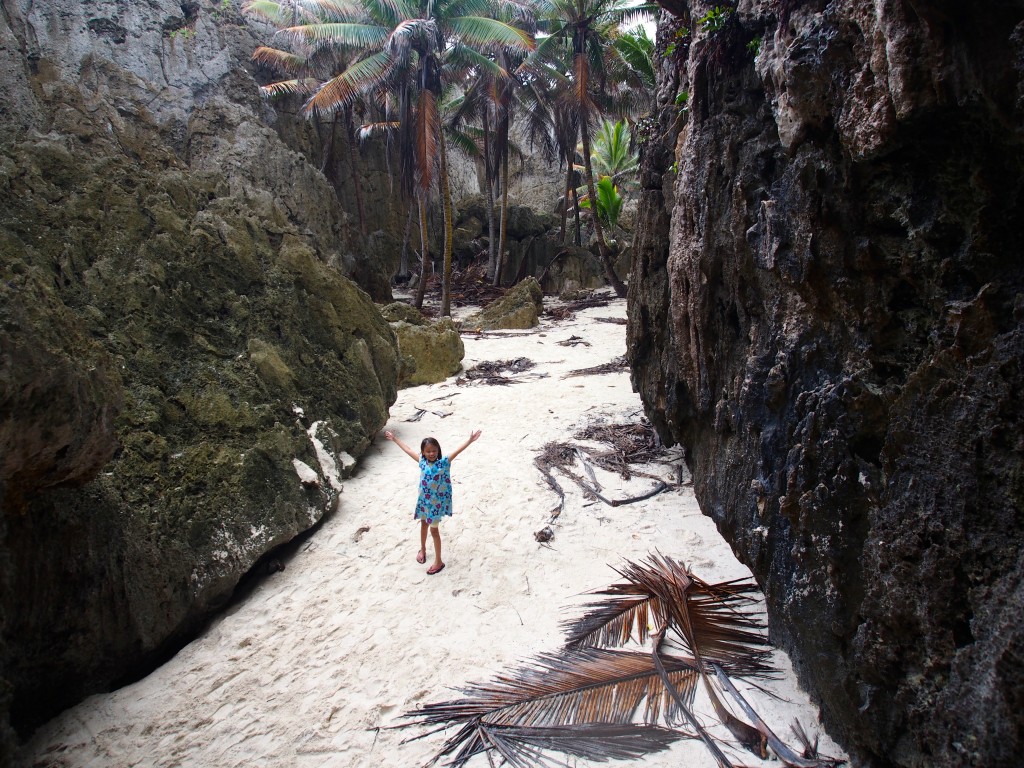
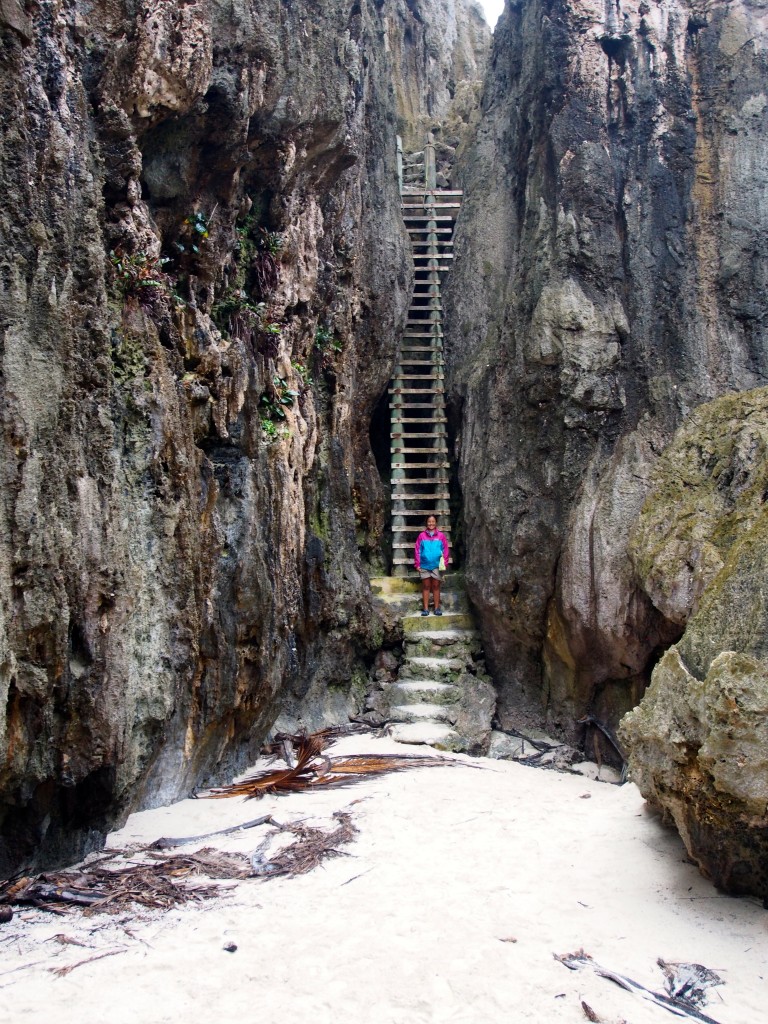
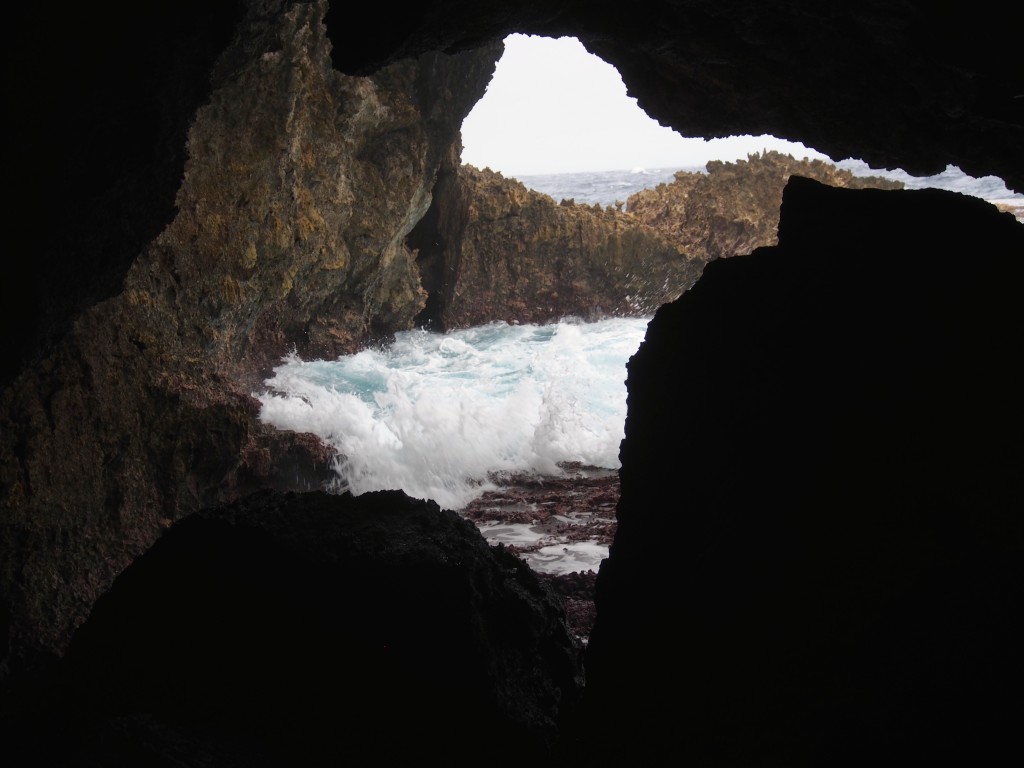
The entire tour took us about half a day. Afterwards, we showered at the bathroom facilities on the wharf, then rewarded ourselves with a nice sushi dinner at Kaika Japanese restaurant, where we had a 6:30pm reservation. The food was absolutely superb—miso soup, fresh seared toro (tuna belly) served 3 different ways, chefs-choice rolls of wahoo, tuna, and mahi mahi, and soba noodles.
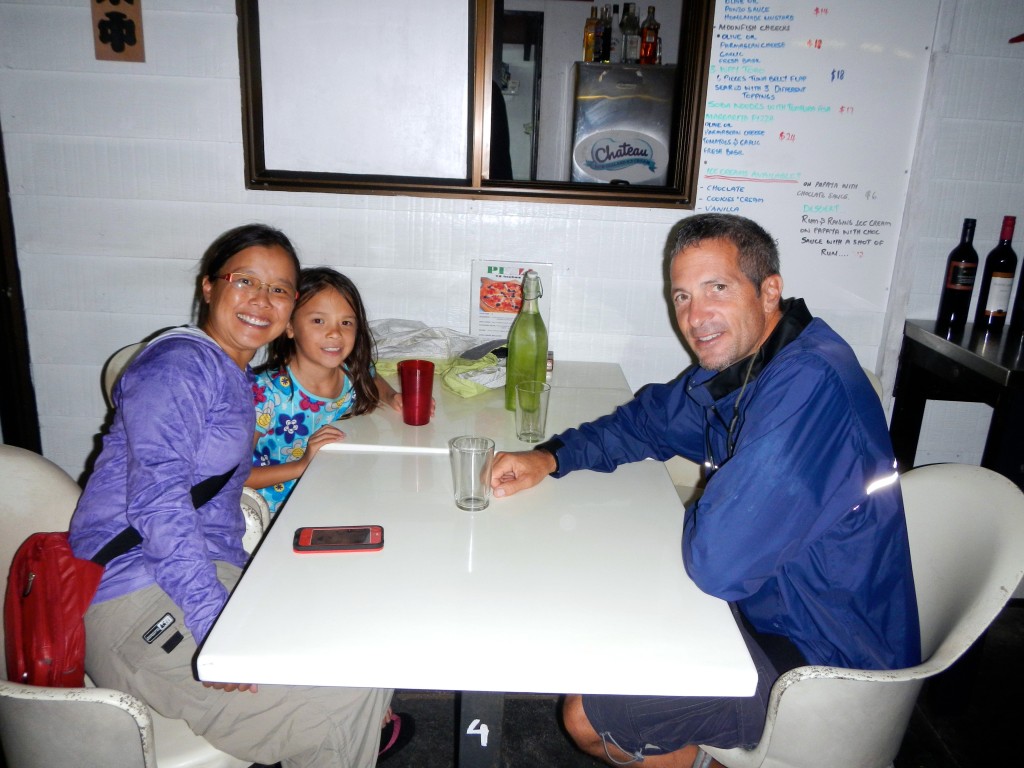
Although our stay on Niue was only 3 days, we were very glad we stopped. The laid-back lifestyle and friendliness of the Niueans was similar to that in some of the other south pacific islands. We also met some cruisers from Australia who we would end up buddy-boating with to Tonga. Dan and Sara on SV Brahminy bought their boat in the Caribbean and are sailing it to northern Australia. We bumped into Richard and Geri on SV Panthera who are from England and are also on their way to Australia (we met them in Mexico and saw them again in Bora Bora). So on Saturday, we joined both of these boats in up-anchoring for the 2-day sail to Tonga, keeping in touch along the way via VHF radio with weather reports and whale sightings. We even got close enough (within a mile) to take pictures of each others boat during the passage!
